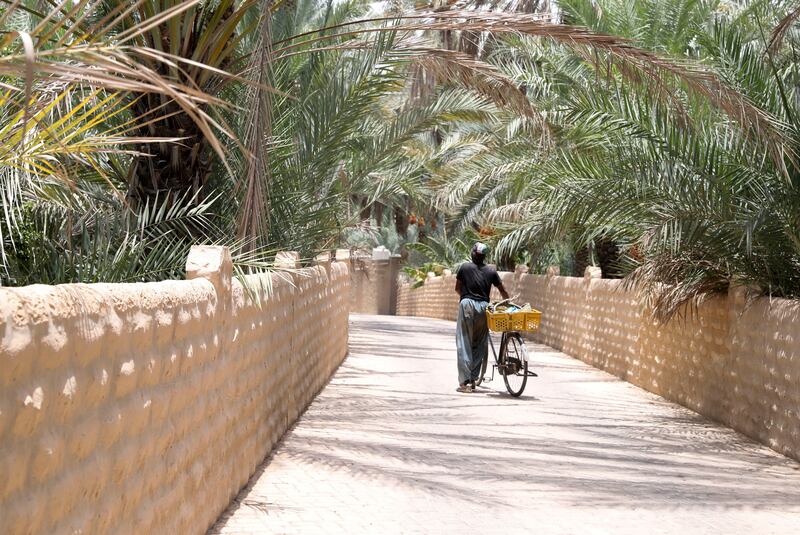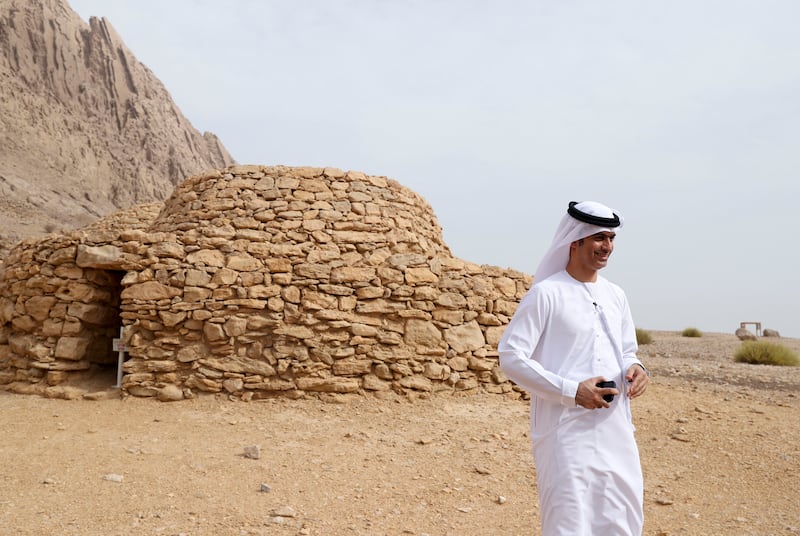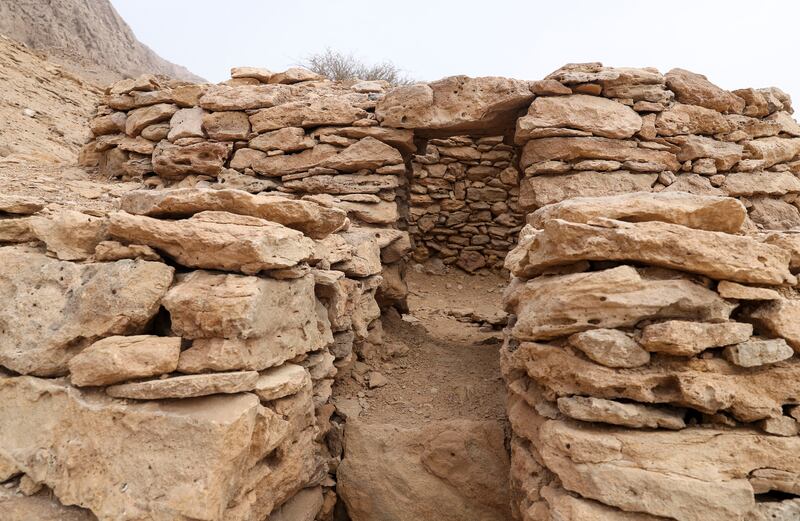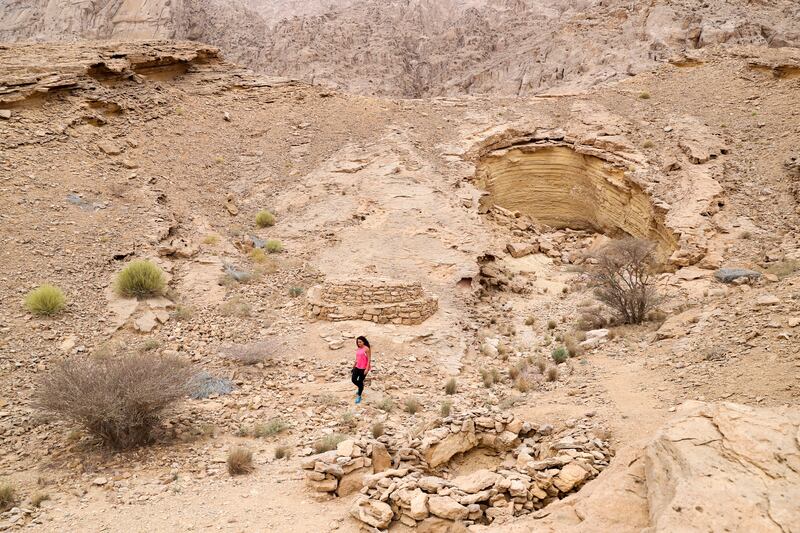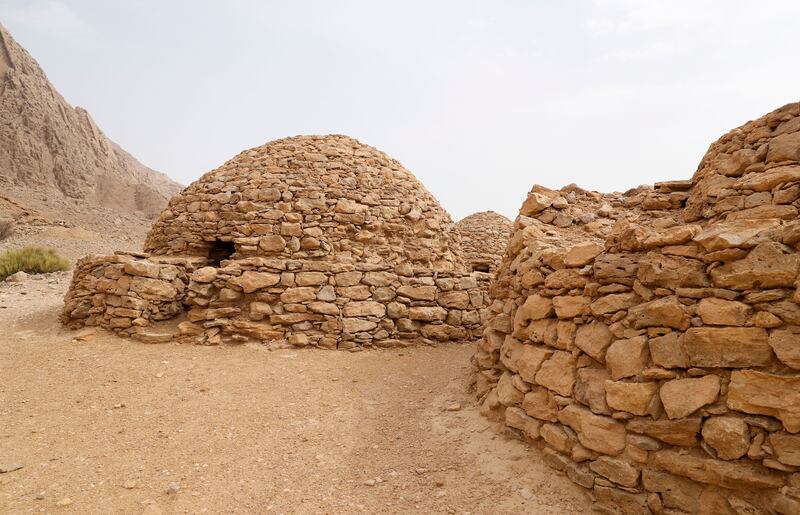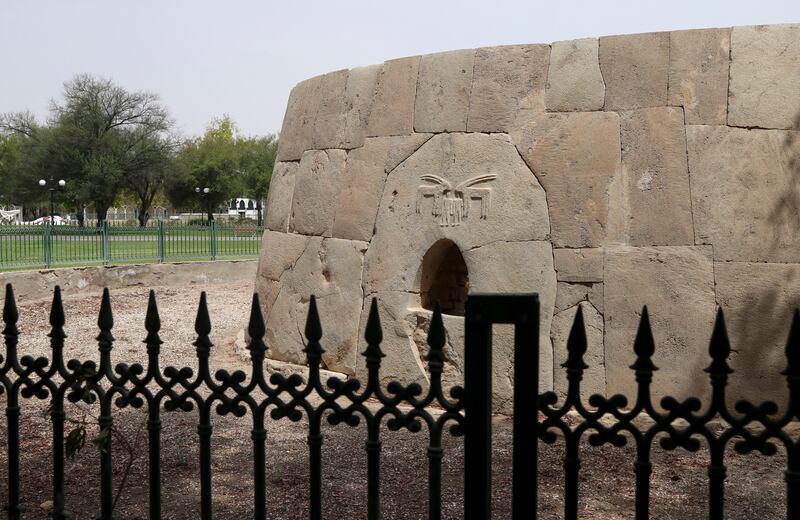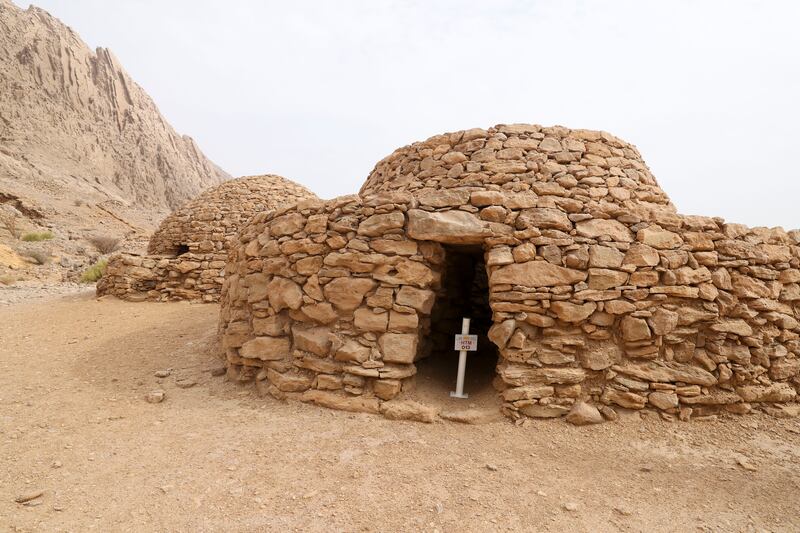Al Ain, a city rich with UAE heritage and tradition, has several locations mentioned in the Unesco World Heritage List.
Tombs that date back to the Bronze Age and oases that are fed by an ancient system of running water can be found in Al Ain.
More than a dozen places in the oasis city – registered as a series under one site – that were added to the UN cultural agency's list in 2011.
A tour of the UAE's Unesco World Heritage sites
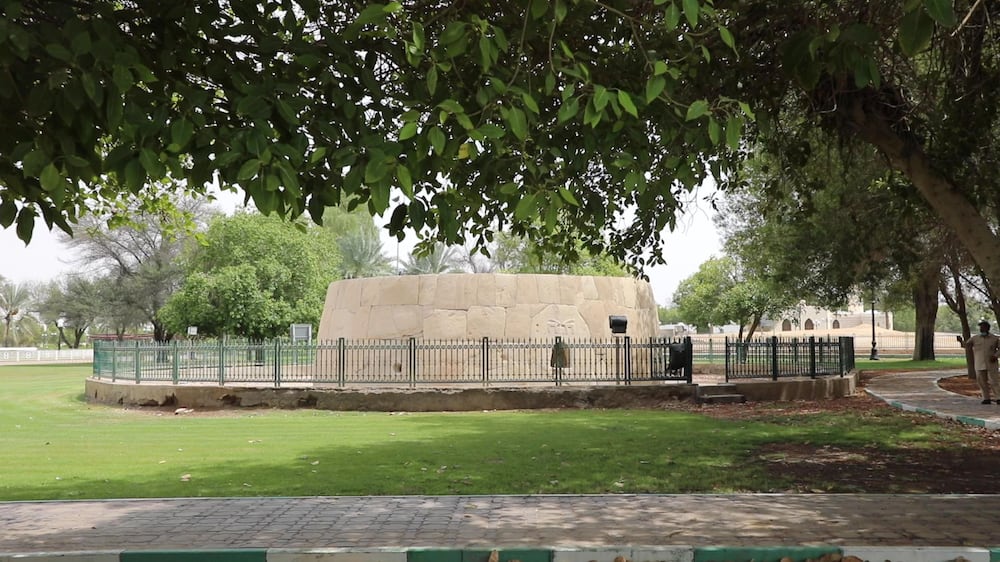
The National explored three of the significant locations.
Jebel Hafeet Tombs
The tombs site was the first to be excavated in Al Ain after being discovered by a Danish team in 1961.
The dome-shaped structures generally contained the remains of two to five people who were buried in a crouched position with their belongings, said Abdulla Al Kaabi, head of archaeological survey at the Department of Culture and Tourism in Abu Dhabi.
Remains of skeletons and ceramic and copper artefacts were also found.
“This indicates that they believed in life after death,” Mr Al Kaabi said.
The tombs were discovered as piles of collapsed stones and were not the dome shapes that can be seen today.
“Each stone was studied carefully until they got the overall idea of how they looked, and restored the shape,” Mr Al Kaabi said.
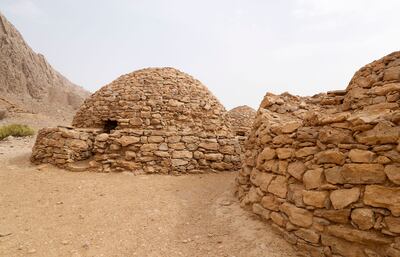
Forty of the tombs, which are about three metres tall, have been restored.
“Some of the objects and masterpieces that were found have been transferred to the museum, so people can see them,” he said.
Dating from 5,000 years ago, the tombs mark the start of the Bronze Age in the UAE.
“The Bronze Age is when people started to use bronze to manufacture objects,” Mr Al Kaabi said.
Similar tombs are found in Oman.
He said the UAE and Oman were famous for using bronze as an important item of trade and exchange with other civilisations that existed at the time.
Hili Archaeological Site
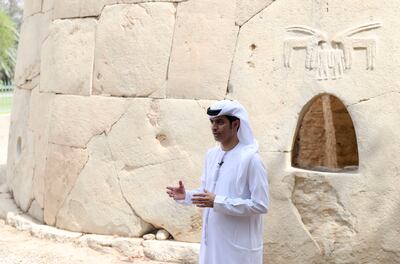
The Hili Archaeological Site shows the earliest evidence of an agricultural village in the UAE, dating from 2500BC.
The site includes an ancient desert irrigation system known as al falaj, which channels water from underground and provides a constant flow of water through the oasis.
It is the UAE's largest collection of tombs and buildings from this ancient period.
The Grand Tomb, the largest in Hili Archaeological Park, has a carving of two people with an oryx between them above the entrance.
“This kind of tomb is much larger than the Hafeet tombs,” Mr Al Kaabi said.
The Grand Tomb would have been 14 metres in diameter and four metres tall.
Carvings on the other side of the tomb show two cheetahs and what appears to be two people dancing.
“They had two entrances – one north and one east,” he said.
Another carving shows an animal with someone riding on its back.
“This could be showing their nature and relationship with the nature surrounding them,” he said.
More than 500 objects, including beads and pottery, were found when the site was excavated by a Danish team in 1965.
The tombs were restored by an Iraqi team in 1975.
Al Ain Oasis
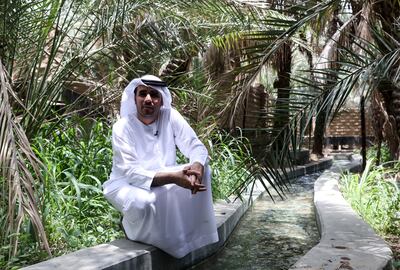
The six oases provide an insight in to the lives of the people who lived there 4,000 years ago.
The largest one, Al Ain Oasis, covers 1,200 hectares and has more than 147,000 date palms.
“In the oasis, there are different levels of agriculture. The most famous one is the palm tree, but you can also see mango trees, banana trees, lemon trees, and fig,” said Abdulrahman Al Nuaimi, world heritage sites manager at the Department of Culture and Tourism.
The falaj system runs through the oasis serving hundreds of farms. The farms were passed on from generation to generation, and are now run by more than 500 farmers.
"The majority of those farms have been donated by their owners as charity endowments, which means they can no longer be sold or passed on to heirs," Mr Al Kaabi said.
They are solely managed by the UAE's General Authority of Islamic Affairs and Endowments, which distributes the profits to charity.
The oasis also played a major part in the urban planning of Al Ain city, which was built around it in a way that would not “destroy the oasis and its fabric”.
